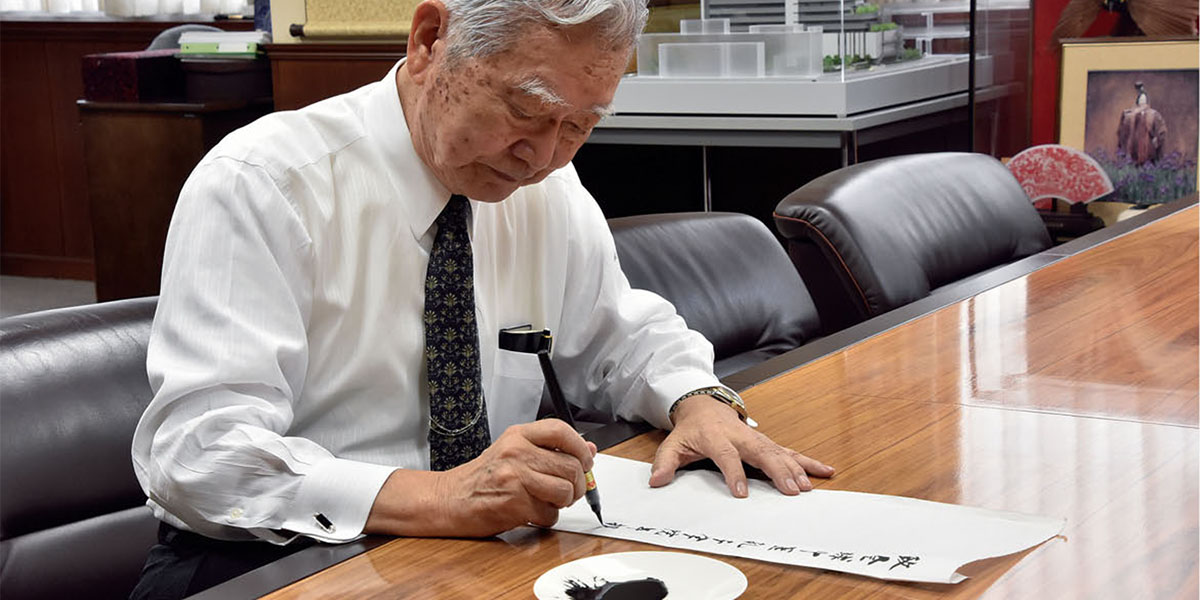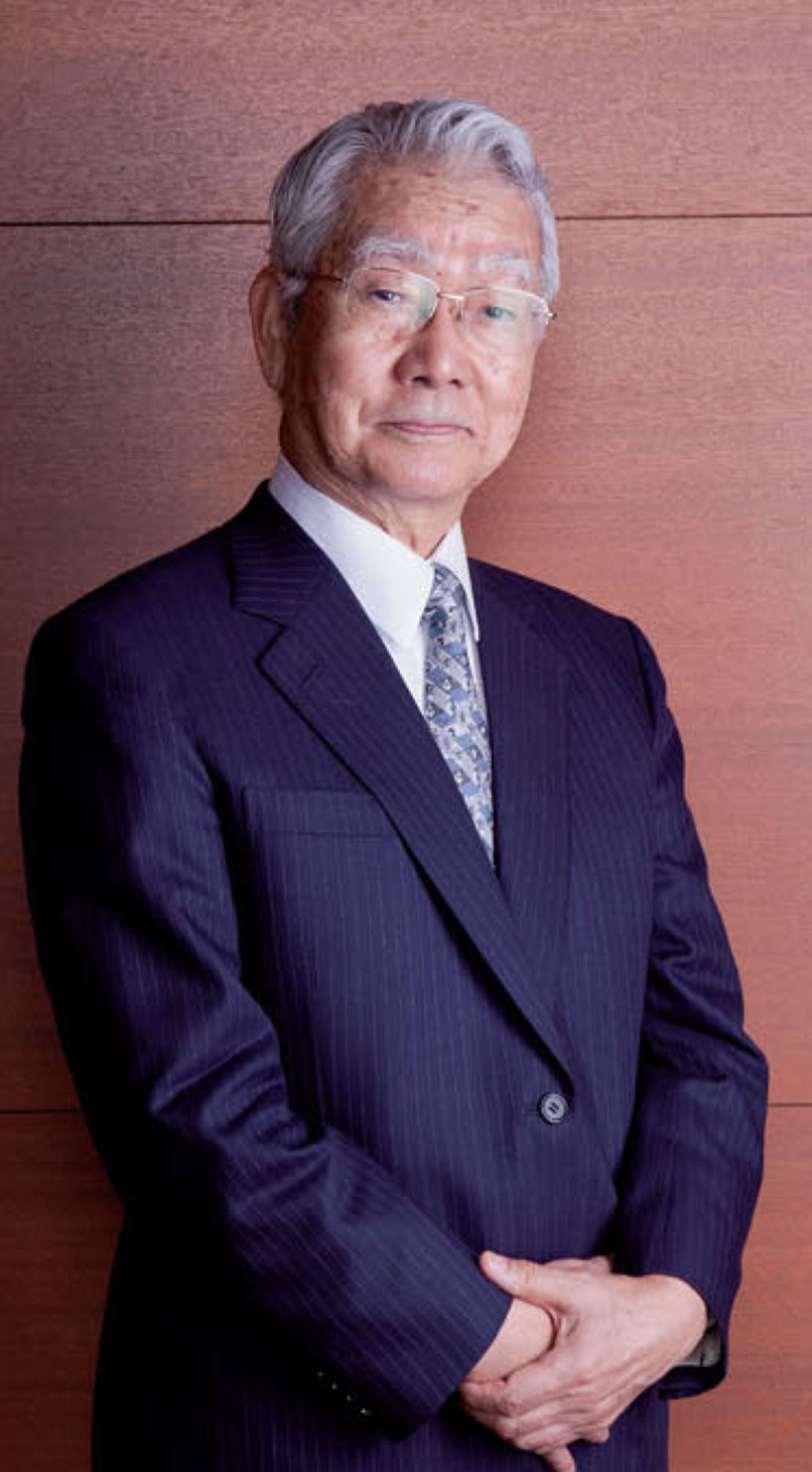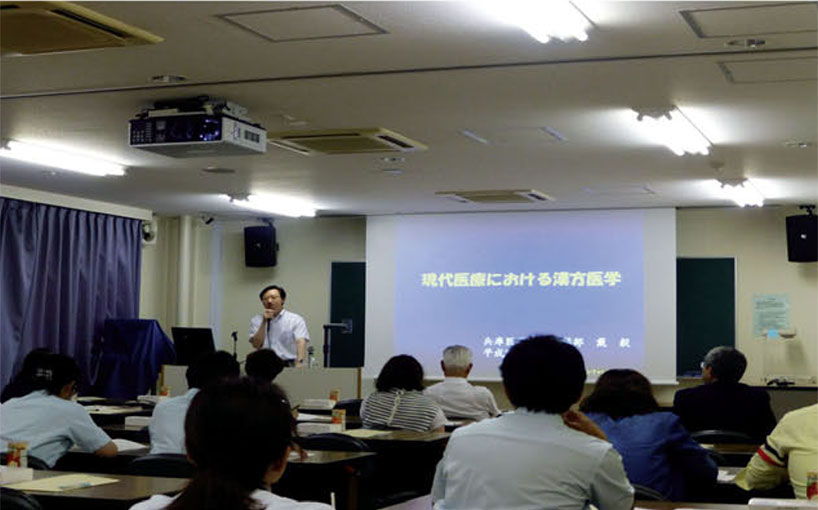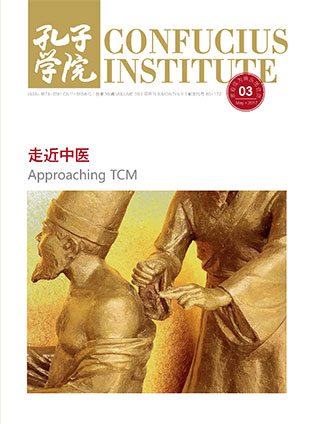

Mr. Sohei Shinka: A Man Devoted to the Introduction of Traditional Chinese Medicine
Mr. Sohei Shinka, Chairman of Board of Trustees of the Chinese Medicine Confucius Institute at Hyogo College of Medicine (CMCI at HCM) in Japan: “Chinese culture is the elder brother of Japanese culture, and I believe sowing the seed of Traditional Chinese Medicine in young Japanese doctors trained in Western medicine will certainly play an important role in the future.”
At the Confucius Institute Conference held in Kunming on 10 December 2016, a greyhaired but hale gentleman received the “Confucius Institute Individual Performance Excellence Award of the Year” from Chinese Vice Premier Liu Yandong. He is the 86-year-old Mr. Sohei Shinka, Chairman of Board of Trustees of the Chinese Medicine Confucius Institute at Hyogo College of Medicine (CMCI at HCM) in Japan.
Mr. Shinka graduated from the Faculty of Medicine of Osaka University, specializing in immunology. Under the influence of his brother, who studies Chinese history, he has read extensively Chinese classics including the works of Confucius, Mencius, Laozi and Xunzi, and has thereby gained a wide knowledge of Buddhism, Confucianism and Taoism. He is so familiar with The Analects of Confucius that he often unwittingly quotes from the book during conversations. For example, when talking about Sino-foreign relationshe cited from The Analects of Confucius: Li Ren: “ If you are virtuous, you will not be lonely. Instead, you will always have friends.” when speaking of life experience, he quoted, “At sixty, my ear was an obedient organ for the reception of truth.” He also intensively reads traditional Japanese literature and Chinese poems and studies calligraphy, Go and Shogi.
Mr. Shinka was excited when he was informed that Hyogo College of Medicine was approved to jointly prepare for the establishment of CMCI together with Beijing University of Chinese Medicine. Although he was over eighty, he went to Confucius Institute Headquarters in Beijing and the Chinese partner institution many times to communicate with them. Everyone who has had contact with him is touched by his intense fondness of traditional Oriental culture and his wish to integrate traditional Chinese medicine (TCM) with Western medicine to cure diseases and save more patients.
In 2012, his wish finally came true. On 9 November that year, the Chinese Medicine Confucius Institute, jointly established by Beijing University of Chinese Medicine and Hyogo College of Medicine, officially began operations. Mr. Shinka soon established the Board of Trustees and invited the presidents of Hyogo College of Medicine and Hyogo University of Health Sciences as well as other leading officials of the two universities to hold important posts of the Board. Therefore, decisions of the Board naturally become those of the universities, leaving out lots of procedures for examination and approval.
Both administrative and academic activities are on the increase with the establishment of CMCI. Considering that Mr. Shinka is responsible for the administration of two universities and a large hospital with 3,618 employees and 962 beds, one can imagine how busy he is every day. Nevertheless, he will, however occupied he is, put the activities of CMCI on the top agenda and give them high priority immediately when they are presented to him.
On 9 January 2016, when he learned that CMCI, Kyoto University and the Research Department of Medical History of Kitasato University Oriental Medicine Research Center would jointly hold the International Forum on Traditional Medicine, he immediately gave up his weekend and spent over three hours travelling from Osaka to Tokyo to assist the Chinese and Japanese directors of CMCI in publicizing the Confucius Institute. It was already midnight when he took the last Shinkansen back to Osaka after attending the gathering according to the Japanese etiquette. On the second day, however, he made appearance in another event on time.
When CMCI arranged for students to participate in the winter camp at Beijing University of Chinese Medicine from 2013, Mr. Shinka decided to have the college pay for the students’ return tickets. He has always supported this program, because in his opinion, “Young Japanese people don’t know China, and they can only truly understand her cultural charm by visiting this country and experiencing everything there in person.” Mr. Shinka attaches great importance to the students’ report meeting when they are back in Japan. He always goes to the meeting early that day, listens with relish to students talking about their feelings of learning TCM and excitedly exchanges his own ideas with the students. The expression of enjoyment on his face looks as if he had been to the camp himself. He also encourages the students to pay attention to such phenomena as differences between TCM and Western medicine and to learn from the strengths of TCM. He often says, “Chinese culture is the elder brother of Japanese culture, and I believe sowing the seed of TCM in young Japanese doctors trained in Western medicine will certainly play an important role in the future.”
The Japanese government abolished Han medicine after the Meiji Restoration in 1868. As a consequence, practitioners of traditional medicine lost their legal status. They have not been recognized as “doctors” so far. In this context, therefore, publicizing traditional Chinese medicine is beset with difficulties.
In support of more students’ study of Chinese medicine, Mr. Shinka has established the Department of Oriental Medicine and added to the regular system of university education such courses as Medical Chinese, Introduction to Oriental Medicine, Therapeutics of Han Medicine, Formulae of Han Medicine, Clinical Therapeutics of Han Medicine and Introduction to Taijiquan. Since 2007, those courses have been taught by Prof. Dai Yi, Japanese Deputy Director of CMCI, which can provide support for the teaching and scientific research and talent cultivation at HCM as well as the exchange and cooperation with Chinese universities by offering Chinese language teaching, hosting cultural and academic lectures, organizing international seminars and supporting cooperative student education and joint publication of research findings. In addition, it can also help students and local citizens to learn Chinese and acquaint themselves with China so as to strengthen mutual understanding and friendship between the two countries. Since 2012, the above courses have been one of the important ways CMCI provides support for HCM. Through the courses, students gradually come to know the basic knowledge of TCM and CMCI. They invite CMCI to take part in the “campus festival” on their own initiative and add the introduction to CMCI into the publicity materials.
With the support of Mr. Shinka, the Institute for Medical Education and Clinical Treatment of HCM, the CMCI and the famous Japanese drug company Tsumura jointly organize six to eight lectures on Han medicine every year. For example, the lectures in 2016 focused on such topics as “Chinese Nobel Laureate”, “Han medicine’s treatment of common and difficult diseases” and “common preparations of Han medicine”. Every lecture saw the active participation of doctors and nurses of the university. Mr. Shinka himself would sit in the first row, listening attentively and sometimes raising questions from the perspective of philosophy for everyone to consider and discuss.
Tu Youyou’s winning the Nobel Prize for Physiology or Medicine in 2015 inspired the world to have a completely new appraisal of traditional Chinese medicine. Likewise, to make more people truly understand and believe in TCM, more scientific studies should be carried out. To achieve this goal, Mr. Shinka has been adopting another measure since 2013 that the university raises three million yen every year by itself and invites young scholars at universities to bid to undertake scientific research projects of CMCI. Everyone who wins the bid will receive a fund of 500,000 yen. In the past three years, many young scholars have applied for these projects, which mainly focus on such topics as the analysis and curative effects of a single drug or a famous prescription of TCM, or the study on the mechanism of pain treatment in an attempt to explain TCM with modern science. In recent years, there have also been studies on the quality assessment of traditional Chinese medicine of the same variety but from different places. Since those research findings carry the signature of CMCI when published, the name of CMCI has for the first time appeared in the biomedicine database of the United States National Library of Medicine (PubMed). The database has so far included seven SCI papers with the signature of CMCI at HCM.

The Institute for Advanced Medical Sciences of Hyogo University of Health Science and CMCI hold seminars together during the carrying out of those scientific research projects. At the seminars, ancient Chinese medicine meets and collides with contemporary Japanese medicine, the prospects of which are promising.
Mr. Shinka shows special interest in painting. He kept learning oil painting under the guidance of his mother from his childhood and was so deep in love with it that he even hesitated between oil painting and medical science during the entrance examination for his university study. When he held an exhibition of oil paintings at Shinsaibashi in Osaka in August 2016, he pointed to his own work and told the visitors, “My dream after retirement is to showcase and popularize the knowledge of traditional Chinese medicine in my paintings”.
Published in Confucius Institute Magazine
Number 50. Volume III. May 2017.
Number 50. Volume III. May 2017.

























No hay comentarios:
Publicar un comentario